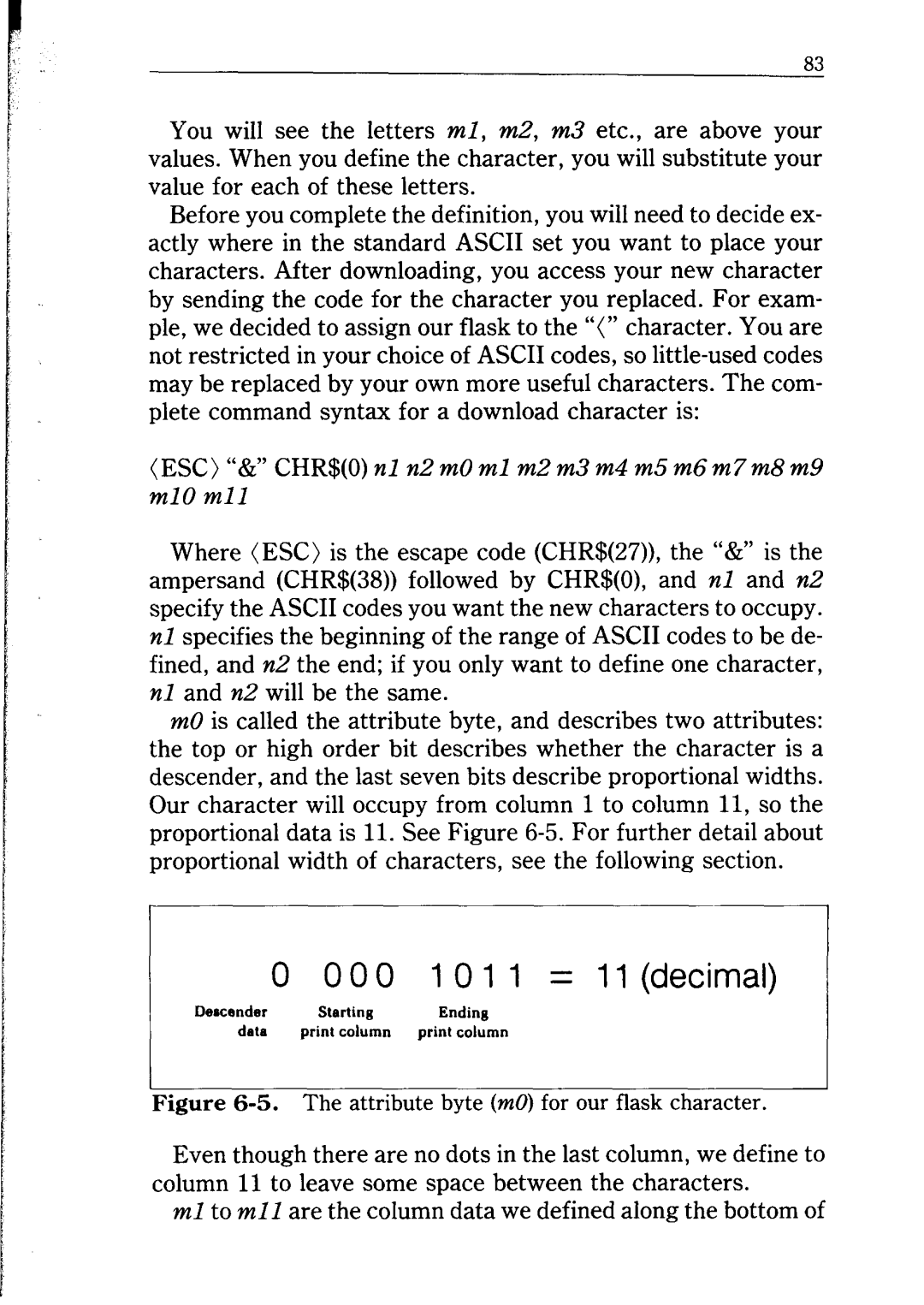
83
You will see the letters ml, m2, m3 etc., are above your values. When you define the character, you will substitute your value for each of these letters.
Before you complete the definition, you will need to decide ex- actly where in the standard ASCII set you want to place your characters. After downloading, you access your new character by sending the code for the character you replaced. For exam- ple, we decided to assign our flask to the “(” character. You are not restricted in your choice of ASCII codes, so
(ESC) “8~” CHR$(O) nl n2 m0 ml m2 m3 m4 m5 m6 m7 m8 m9 ml0 ml1
Where (ESC) is the escape code (CHR$(27)), the “8~” is the ampersand (CHR$(38)) followed by CHR$(O), and nl and n2 specify the ASCII codes you want the new characters to occupy. nl specifies the beginning of the range of ASCII codes to be de- fined, and n2 the end; if you only want to define one character, nl and n2 will be the same.
m0 is called the attribute byte, and describes two attributes: the top or high order bit describes whether the character is a descender, and the last seven bits describe proportional widths. Our character will occupy from column 1 to column 11, so the proportional data is 11. See Figure
Figure 6-5. The attribute byte (Ml) for our flask character.
Even though there are no dots in the last column, we define to column 11 to leave some space between the characters.
ml to ml 1 are the column data we defined along the bottom of
